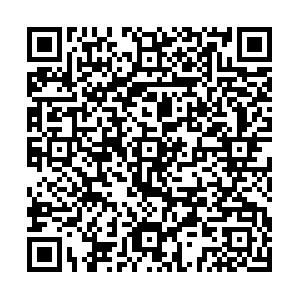Fatigue properties and failure mechanisms of self-piercing riveted joints in titanium and aluminum alloy dissimilar sheets
-
摘要: 對純鈦(TA1)和鋁鋰合金(AL1420)異質單搭自沖鉚接頭進行靜力學實驗和疲勞實驗研究,通過三參數經驗公式采用S-N曲線擬合法繪制接頭的S-N曲線,分析接頭的疲勞性能;采用掃描電子顯微鏡對接頭疲勞斷口進行觀測,研究接頭的微觀疲勞失效機理.結果表明:接頭的靜力學性能與疲勞性能不具有一致性,TA1-AL1420(TA)接頭靜力學性能更優,但其疲勞性能比AL1420-TA1(AT)接頭差;TA接頭疲勞失效形式為下板斷裂,疲勞裂紋萌生于靠近鉚釘腳處的板材區域,隨后沿著板寬方向擴展,最終導致下板完全斷裂.AT接頭在短壽命區因鉚釘斷裂失效,鉚釘的斷口屬于脆性疲勞斷裂;在中長壽命區出現鉚釘斷裂和下板斷裂的混合失效形式,疲勞裂紋從下板一端萌生,沿著板寬向另一端方向擴展,導致下板斷裂失效.
-
關鍵詞:
- 自沖鉚 /
- AL1420鋁鋰合金 /
- TA1純鈦 /
- 疲勞特性 /
- 掃描電子顯微鏡
Abstract: A static test and fatigue test of dissimilar single-lap self-piercing riveted joints were conducted for pure titanium (TA1) and aluminum-lithium alloy (AL1420). The fatigue performance of the joints was analyzed on the basis of the S-N curves; specifically, a fitting method was used to construct the S-N curves of the joints using three empirical parameters. Scanning electron microscopy was used to study the fatigue fracture surfaces of the joints and the microfatigue failure mechanism of the joints. The results indicate that the static performance and fatigue characteristics of the joints are inconsistent:the TA1-AL1420(TA) joint exhibits better static performance, whereas its fatigue characteristics are worse than those of the AL1420-TA1(AT) joint. The fatigue failure mode of the TA joint for the lower sheet is fracture; the fatigue crack appears in the sheet area around the rivet tail and extends along the width of the sheet, leading to complete fracture of the lower sheet. The loss of efficacy of the AT joint in the short-life region is related to fracture failure of the rivet, which exhibits brittle fatigue fracture. A mixed failure mode of rivet fracture and lower sheet fracture occurs in the middle-long life region, and a fatigue crack appears from one side of the lower sheet, extends along the width of the sheet to the other direction, and eventually lead to the failure of the lower sheet. -
參考文獻
[5] He X C, Pearson I, Young K. Self-pierce riveting for sheet materials:state of the art. J Mater Process Technol, 2008, 199(1-3):27 [6] Huang L, Shi Y D, Guo H D, et al. Fatigue behavior and life prediction of self-piercing riveted joint. Int J Fatigue, 2016, 88:96 [7] He X C, Zhao L, Deng C J, et al. Self-piercing riveting of similar and dissimilar metal sheets of aluminum alloy and copper alloy. Mater Des, 2015, 65:923 [9] Chung C S, Kim H K. Fatigue strength of self-piercing riveted joints in lap-shear specimens of aluminium and steel sheets. Fatigue Fract Eng Mater Struct, 2016,39(9):1105 [10] Zhao L, He X C, Xing B Y, et al. Influence of sheet thickness on fatigue behavior and fretting of self-piercing riveted joints in aluminum alloy 5052. Mater Des, 2015,87:1010 [11] Gay A, Lefebvre F, Bergamo S, et al. Fatigue performance of a self-piercing rivet joint between aluminum and glass fiber reinforced thermoplastic composite. Int J Fatigue, 2016,83:127 [15] Chen Y K, Han L, Chrysanthou A, et al. Fretting wear in selfpiercing riveted aluminium alloy sheet. Wear, 2003, 255(712):1463 -

 點擊查看大圖
點擊查看大圖
計量
- 文章訪問數: 754
- HTML全文瀏覽量: 324
- PDF下載量: 14
- 被引次數: 0



 下載:
下載:
